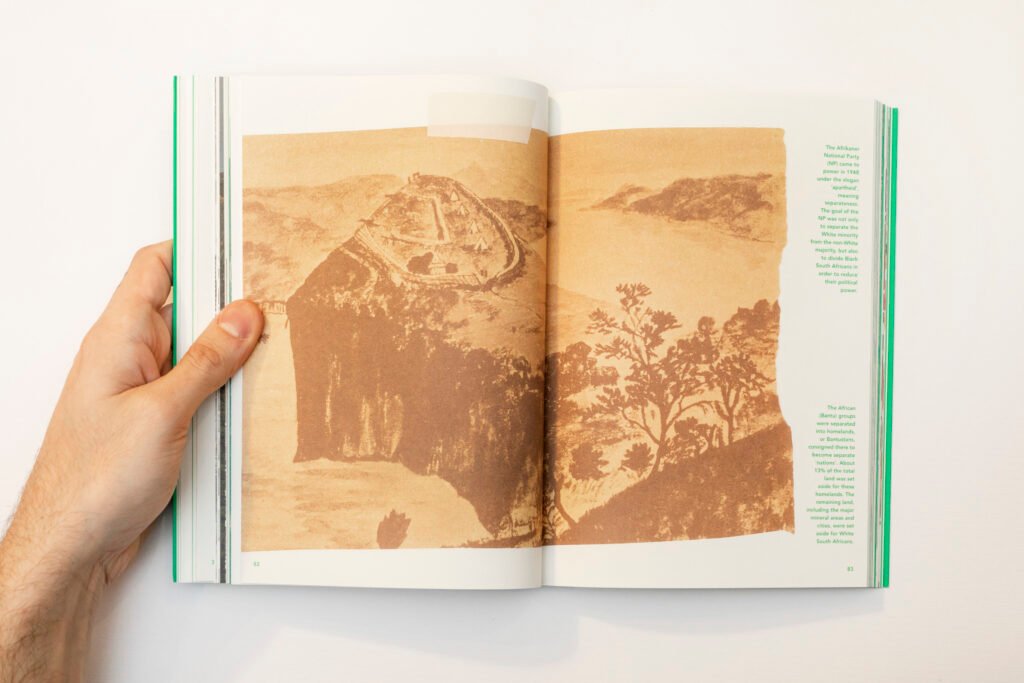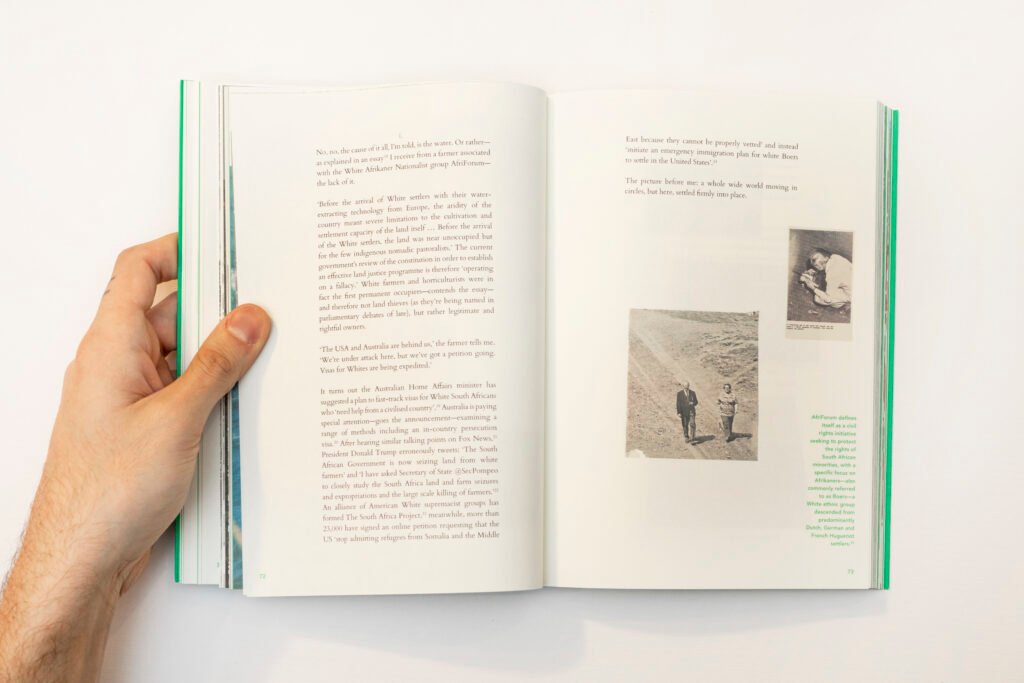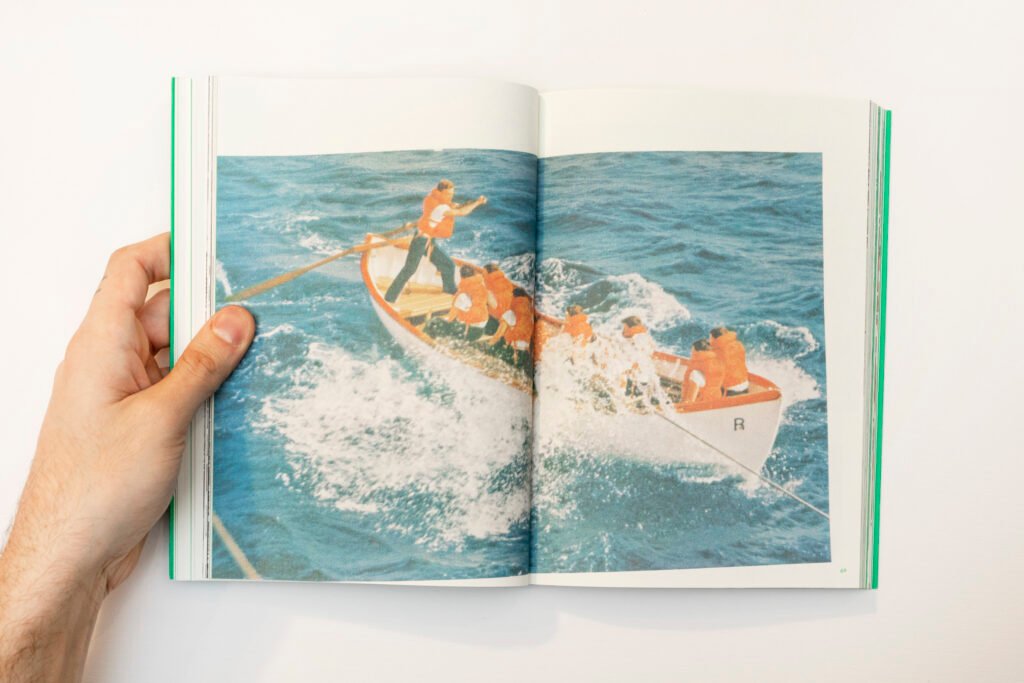The territory investigated in Good Hope is contested between two opposing narratives. With Good Hope, the artist Carla Liesching compiles a wide-ranging visual and textual investigation that takes as its subject the troubled political, historical and identity narrative of the Cape of Good Hope, a rocky peninsula located in South Africa, in the Western Cape province that constitutes the southwestern extremity of the African continent.
On one hand there’s the memory of the colonial empire, and on the other the desire to emancipate oneself from this political and narrative dominance, opposing this identity with another voice and the concretisation of an epicentre for anti-colonial movements. This narrative ambivalence is a complexity that the author succeeds in interpreting and unravelling through direct knowledge of the various aspects of the place where she was born.
Proceeding through the collection of fragments, images and texts, Carla Liesching configures a visual research that offers the interlocutor a rich and varied panorama. A crossing of the landscape in which, through juxtapositions and readings, it is possible to discern the general character of a vision that is both attentive to the history of the place and at the same time profoundly poetic.
Using a method that does not disdain the generic characteristics of documentary prose, Liesching combines personal essays, found photographic material, together with the most disparate sources such as commercial newspapers from the apartheid era, tourist brochures, National Geographic and Life magazines, contemporary newspapers and family albums.
An accumulation of material that the author uses, formalising the language in order to create a posture capable of rendering both the semantic complexity of the object of her investigation and of producing, perhaps primarily for herself, a significant and critical questioning on the past and present history of white supremacist colonialism.
A question that, as an author, goes through and problematises the same artistic practice and her linguistic praxis for which the very act of looking, selecting, approaching and naming things to the point of making them become language and expression cannot but become, in this case more than ever, also an ethical and political gesture.
Carla Liesching is an interdisciplinary artist working across photography, writing, collage, sculpture, installation, bookmaking and design. Grounded in early experiences growing up in apartheid South Africa, her work considers the intersections of representation, knowledge and power—with a focus on colonial histories and enduring constructions of race and geography. As part of her socially engaged practice, Carla is also a youth educator focused on photography, visual literacy and self-publishing as vehicles for expression and empowerment. She is an avid self-publisher and is a contributing editor and co-founder of femme-centered quarterly publication Puzzazz Mag. In 2019, a chapbook version of her project Good Hope was co-published by iTi Press and Gato Negro Ediciones, CDMX, Mexico, and a full-length book will be published in October 2021 by MACK, London, UK. She is a 2021 Light Work Grant recipient, as well as a winner of The British Journal of Photography Open Walls Arles competition, with upcoming exhibitions at the Lightwork Foundation and at Galerie Huit during Recontres Arles Photo Festival. Recent exhibitions also include: Late/Refusals with Oranbeg Press, Brooklyn (2021); Gato Negro and Friends Popup at MoMA , New York (2019); Follow my Hand at Deli Gallery, Brooklyn (2019); a booth with Brownie Project at PHOTOFAIRS Shanghai (2018); Emerging Photographers at CAFA Art Museum, Beijing (2018); wholewide.world with Volte Face, Johannesburg (2018). Carla is currently based in Ithaca, New York, where she works as faculty for the International Center of Photography and coordinates the School of Criticism and Theory in the Comparative Literature department at Cornell University. She has also worked as an instructor and visiting lecturer at the Market Photography Workshop in Johannesburg. Carla is a 2019 graduate of Ithaca College’s Image Text MFA program.

















